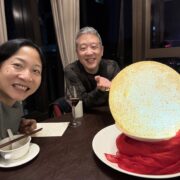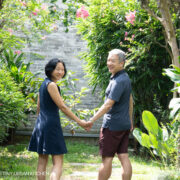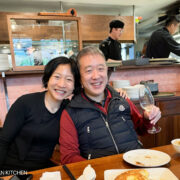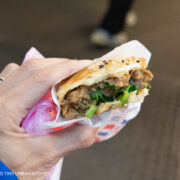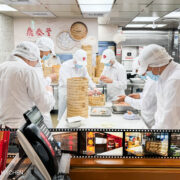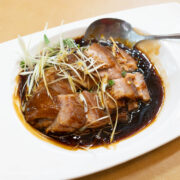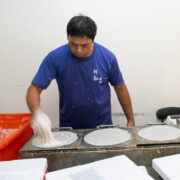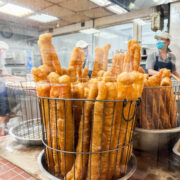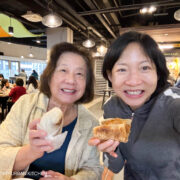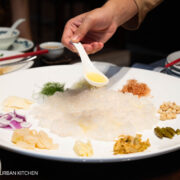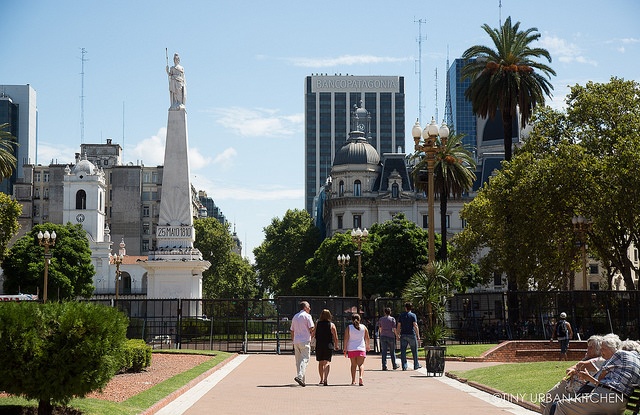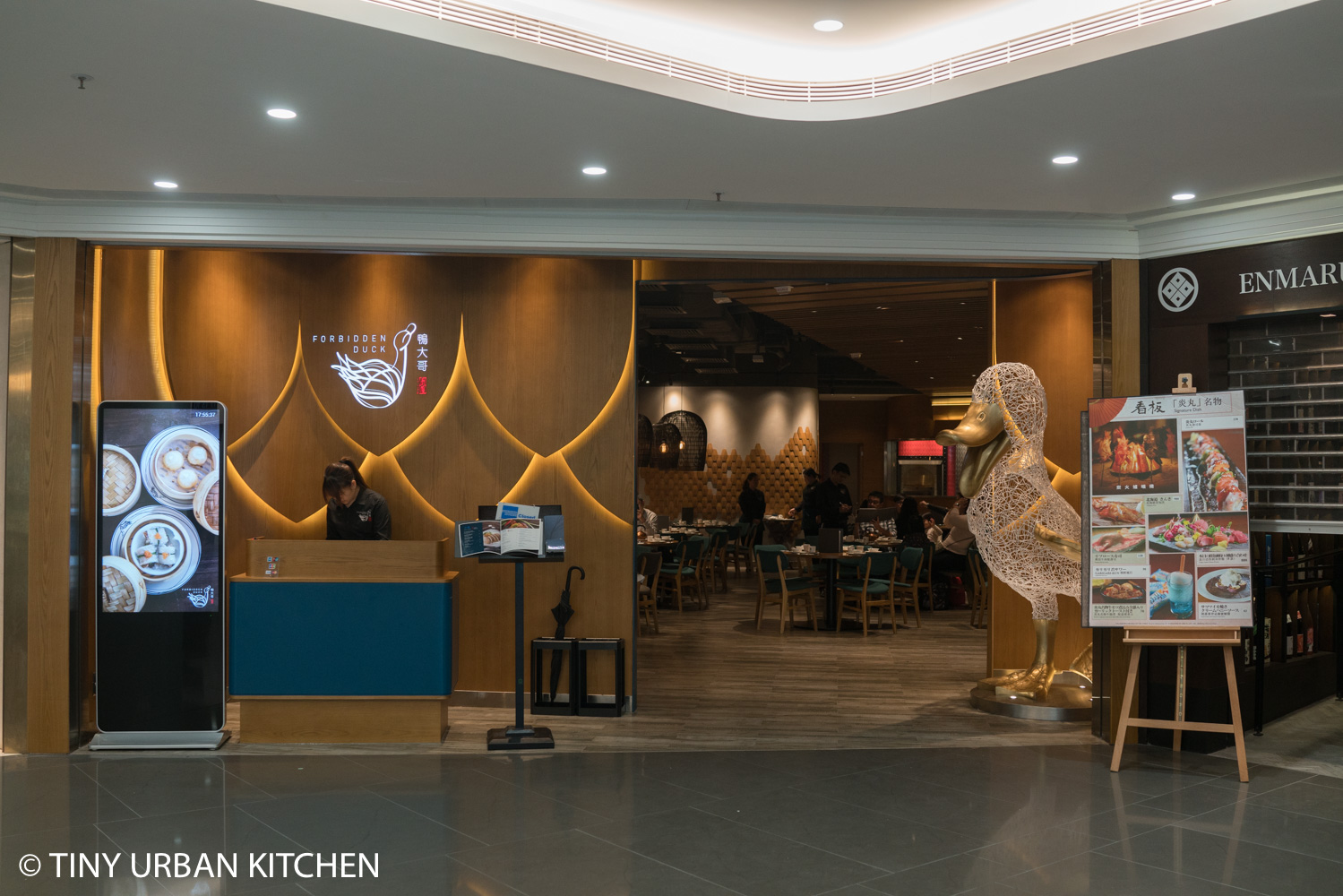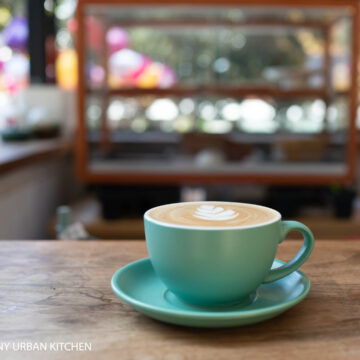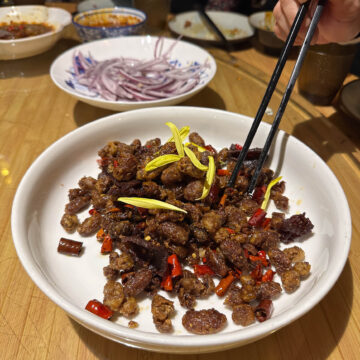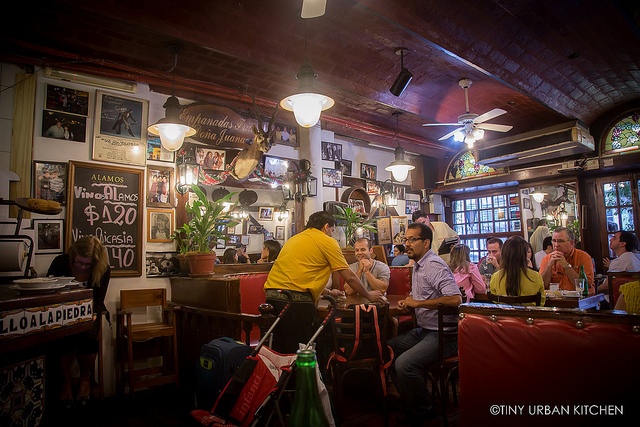
This is the third post in the Hello Argentina Series detailing my week-long trip in Buenos Aires, Argentina. Other posts include Hello Argentina, La Cabrera, and La Rambla.
Sometimes ignorance breeds the greatest amount of fear.
This was our first time in South America. Bryan's co-worker had gone to Buenos Aires not too long before our trip, and had told Bryan horror stories of how unsafe the city was.
Coworkers and friends of mine told me similar things. Don't open our mouths and speak in public (you'll reveal you're a foreigner). Don't take taxis by yourself (gypsy cabs are known to rob or swindle people). And never flash your cash around or wear expensive designer things, especially watches (Rolexes are especially popular).
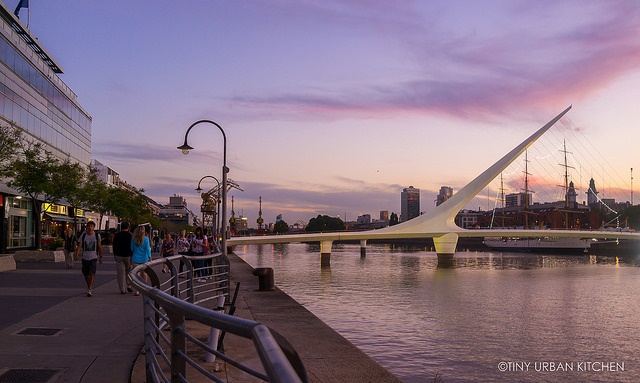
It wasn't until we arrived that we realized that Buenos Aires is not that different from any other major metropolitan city. Yes, you should be aware of your belongings. And yes, the current economic situation is not great, and as a result there has been more petty crime and vandalism. However, when I walked around the city, it really did not feel that different from big U.S. cities like New York, DC, or LA.
Day to day, it actually felt really normal. In fact, after spending a few days there, I got to the point where I felt comfortable enough to walk around by myself in well-known, crowded areas (with the normal vigilance I would keep in any big city).
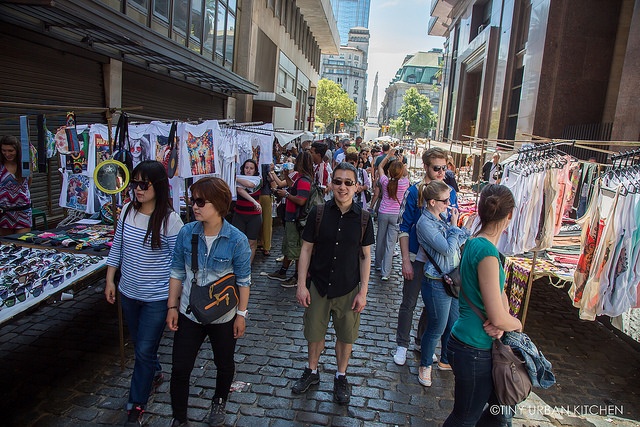
Of course, we didn't know all this before we arrived. Because we were not familiar with the city, we had hired a tour guide to take us around our first few days in Buenos Aires.
It turned out to be great. Our tour guide Nestor from BA Concierge was a local who spoke excellent English. Not only did he give us an interesting local's perspective on the current state of things in Buenos Aires, he also helped us feel much more comfortable maneuvering the city on foot.
The best part? He took us to fun little eateries known for very classic Argentinian dishes, such as lomitos (steak sandwiches), Milanesa, and of course, the famous empanada.
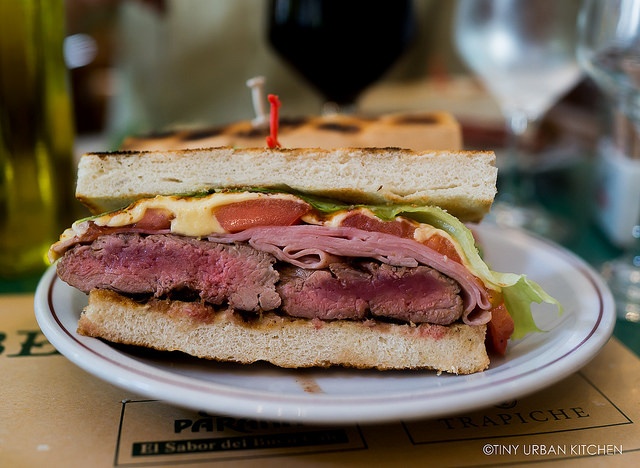
The first day of our tour Nestor tried taking us to La Rambla, a fantastic little cafe that serves the best steak sandwich I've ever had in my life. Unfortunately, La Rambla was closed that day (Bryan and I went back later on our own).
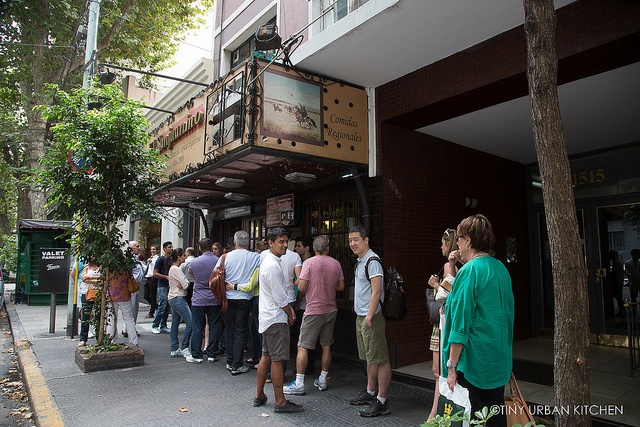
Thankfully, Nestor knew about another really famous and popular spot known for its empanadas, El Sanjuanino.
The line out the front door most certainly validated the popularity of this place.
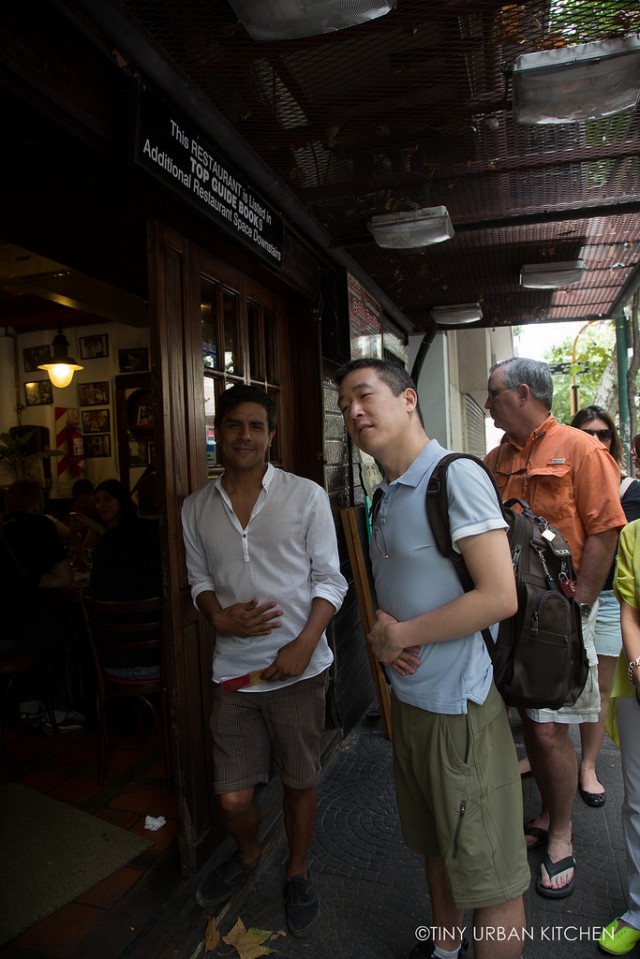
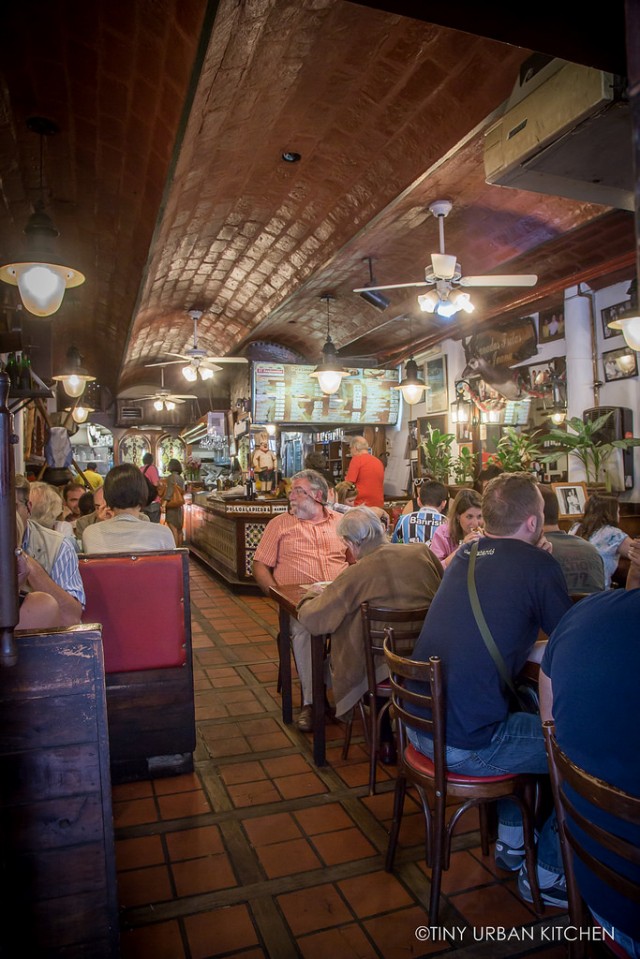
It took us about 20-30 minutes before we finally made it to the front of the line. By that point Bryan and I were starving. I think it was close to 3PM, which feels extremely late for us. Argentinians tend to eat really, really late (restaurants don't even open until 8:30PM for the earliest dinner seating), so I'm guessing the time was perfect for most people.
Clearly, all these people in line were perfectly content to eat so late.
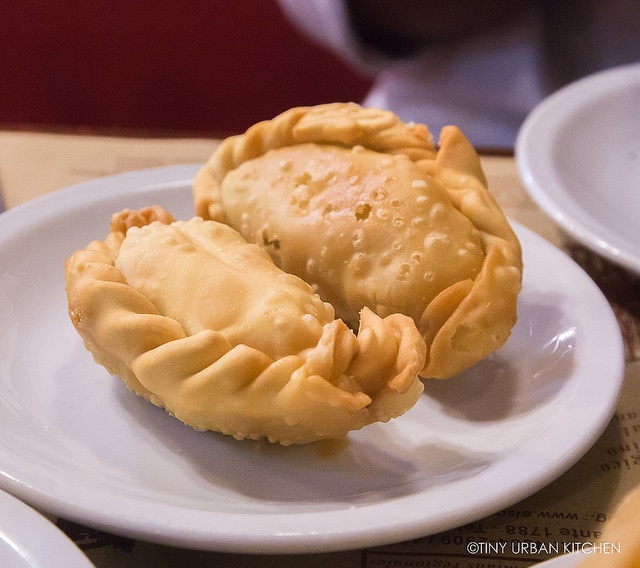
El Sanjuanino is famous for their empanadas, so we made sure to order many different types. We got a few deep fried ones (top) as well as some baked ones (below).
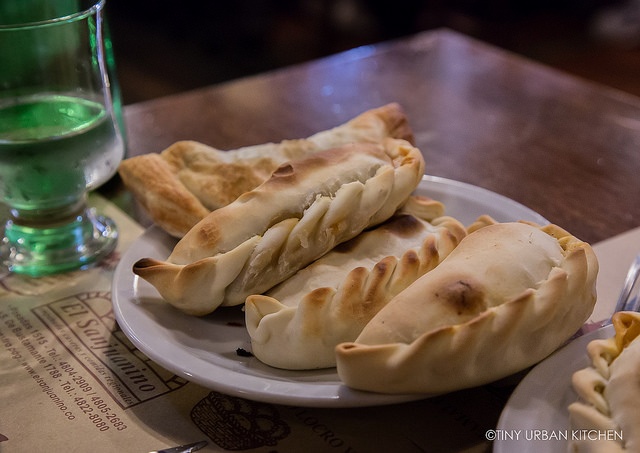
Although I like both, I found that I actually preferred the baked ones a bit more. They taste a bit lighter and healthier - more like real lunch food versus a deep fried snack. There were all sorts of empanadas on the menu, such as carne suave (beef, onion, and olive), carner picante (spicy meat, onion, olives, and eggs), pollo (chicken, onion, bell peppers) and various vegetarians ones such as caprese (cheese, tomato, basil), roquefort (blue cheese), choclo (corn), and jamon y queso (ham and cheese).
We tried a nice variety (about 2-3 empanadas per person). They were all great.
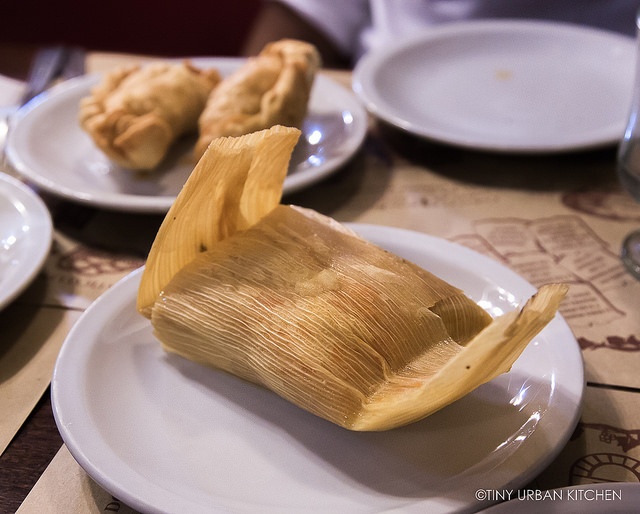
Surprisingly, my favorite item turned out not to be an empanada. Instead, I totally fell in love with the tamale.
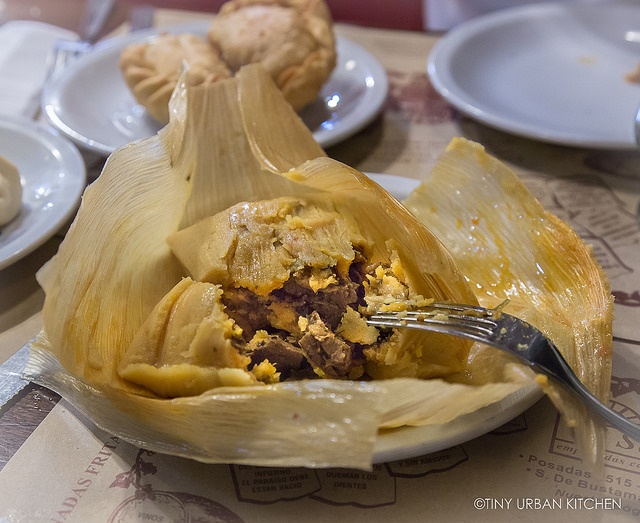
I can't even explain it, except that I absolutely loved the flavors of the filling. It was full of meaty goodness, from the bold seasoning to the tender chunks of meat inside. The whole tamale was just extremely satisfying.
I so wished we had ordered more than one.
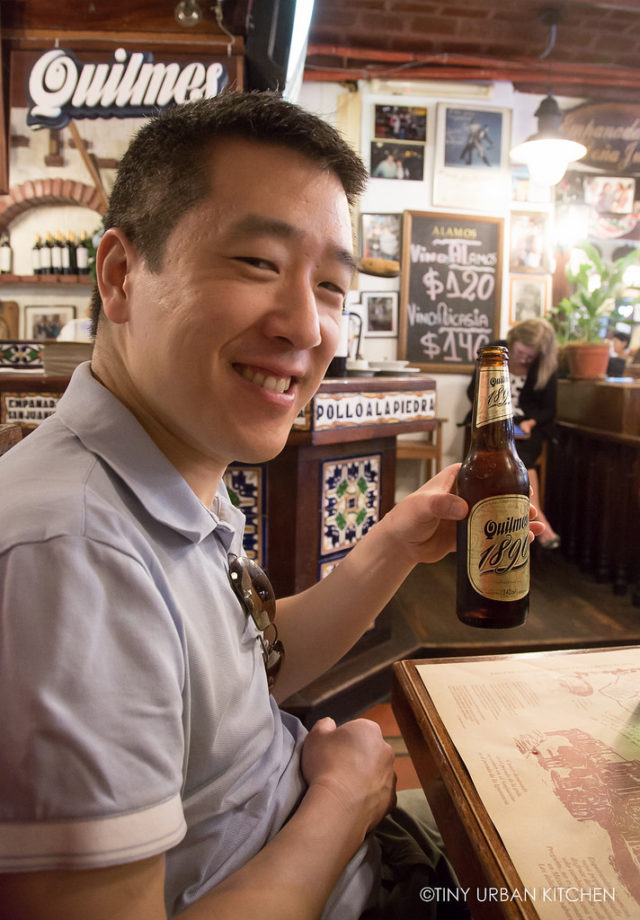
Bryan tried the local beer, called Quilmes 1890. The beef is reasonably light, but pretty tasty.
Lunch Number Two
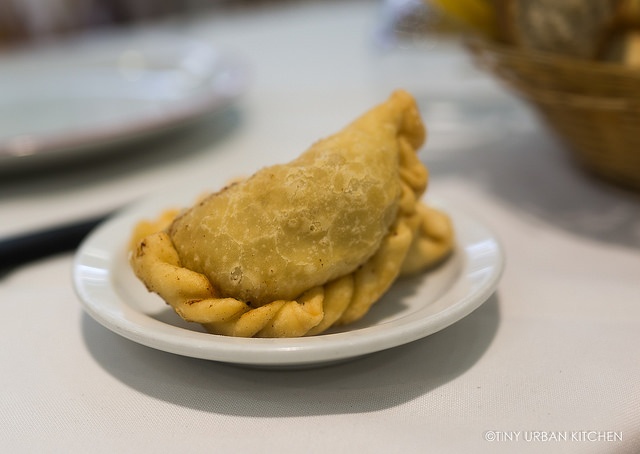
We had empanadas both days we spent with Nestor. The first day, Nestor took us to this little cafe on a random street corner that I absolutely cannot remember. It was very, very local (not a tourist in sight). We were very thankful to have Nestor with us, who could translate the menu and also order for us.
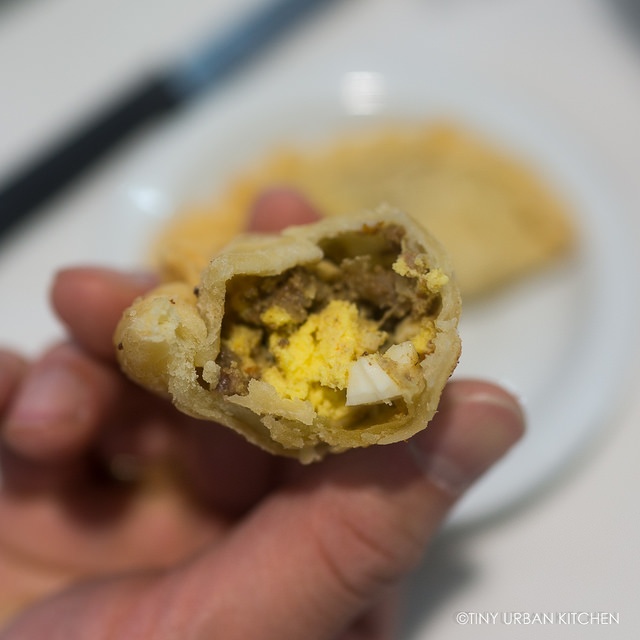
We tried the classic beef empanada, which is traditionally filled with seasoned ground beef, onions, egg, and olives. It was very good.
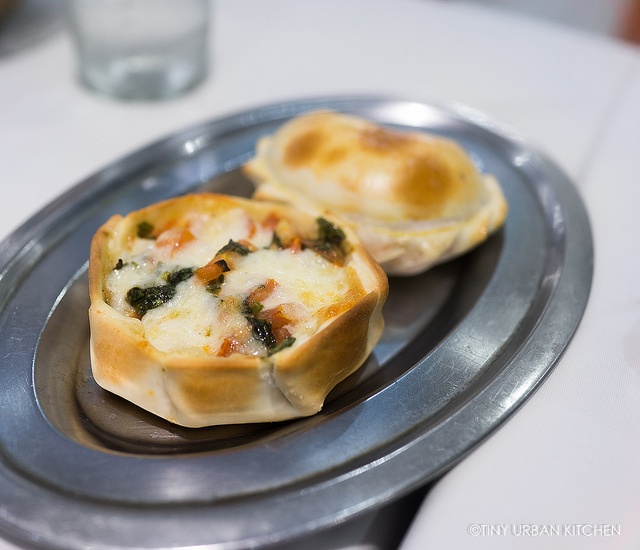
I also loved their Caprese "empanadas", which looked more like open-faced pies but with the empanada skin as the "crust." Nestor told us that it was typical for restaurants to make empanadas of all different shapes to keep track of the various fillings.
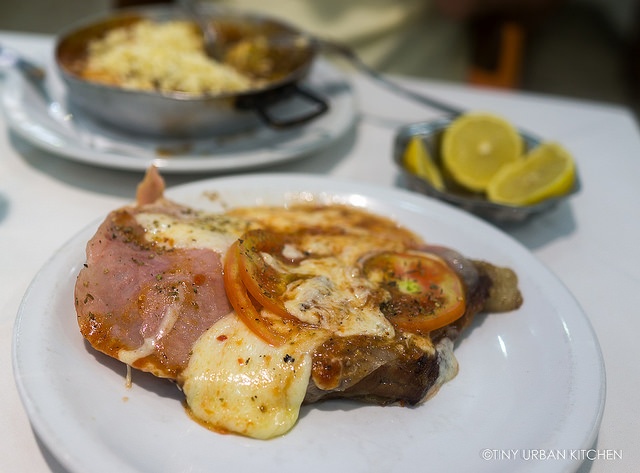
Finally, Nestor told us about the most unusual and interesting dish - something I had never seen before. This, my friends, is called the Milanesa a la Pizza.
Yes, the Argentinians love their beef so much they have invented a pizza that replaces the crust/dough with a breaded and pounded flat piece of beef.
It's brilliant, and pretty tasty as well. This particular "pizza" was topped with ham, tomatoes, and melted mozzarella cheese.
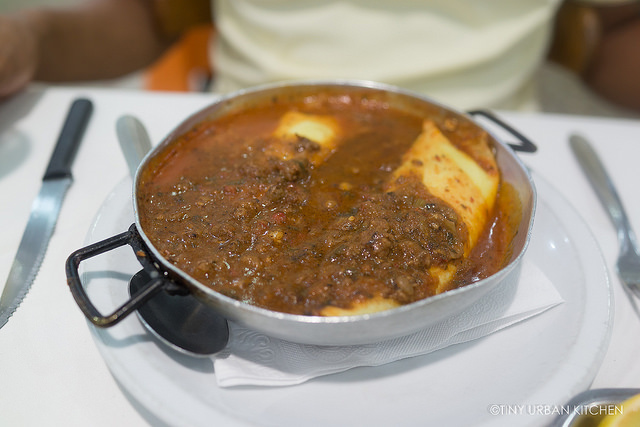
There's a huge Italian influence in Buenos Aires, and thus a lot of Italian-inspired food. Nestor himself ended up ordering a simple dish of cannelloni topped with a beautiful meat sauce.
It was a fun two days touring with a local. We enjoyed asking Nestor what kinds of food he liked (milanesa and lomito steak sandwiches), what his daily life consisted of, and what it was like to grow up in Argentina.
It was eye opening to learn about the current state of things in Buenos Aires. I won't go into detail here, but the country's battling crazy inflation, a rocky economy, and increased petty crime and vandalism.
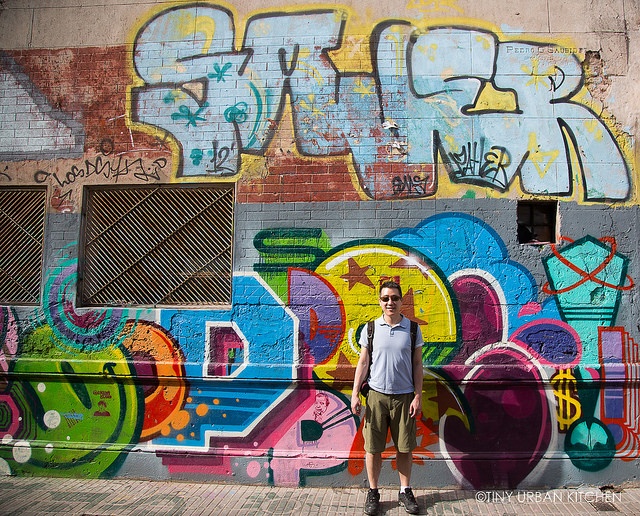
The people I've met are wonderful and the city itself is beautiful - much more European in feel than any other city in South America. Argentina has an amazingly rich history and culture. In some ways this trip was bittersweet because I could see the glory that this city had in its not-so-distant past as well as the current struggles.
All Rights Reserved

